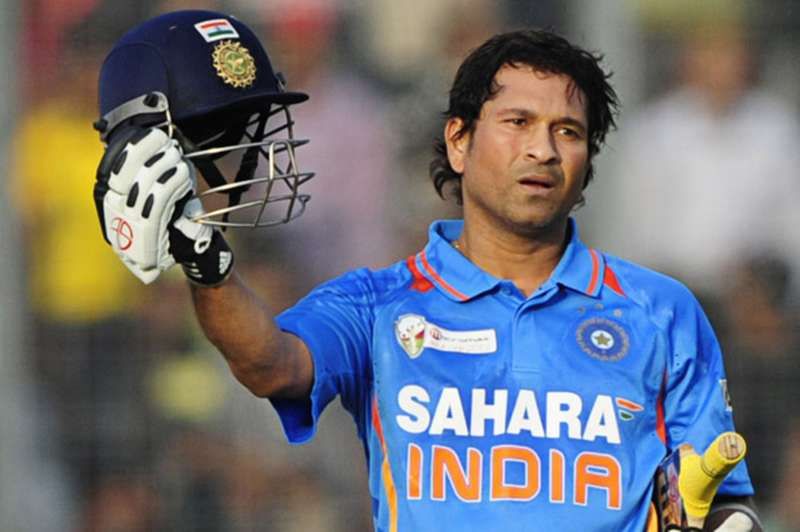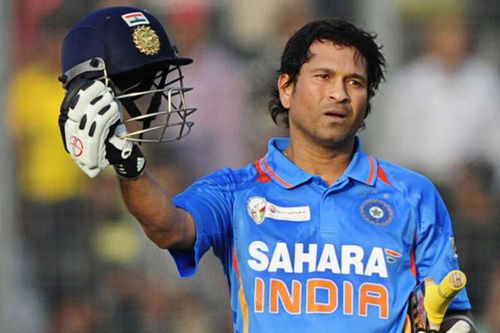
Are subcontinental batsmen selfish?
“Indian batsman are more concerned about milestones than winning.”
Glenn Maxwell’s caustic remarks added salt to the wounds of a 3-0 drubbing that India suffered earlier this year. Although he didn’t name anyone explicitly, he was pointing fingers at Rohit Sharma and Virat Kohli, who slowed down considerably in the 90s despite the pitch staying true and the bowlers leaking runs.Matthew Hayden also made similar claims back in 2004 during Australia’s tour of India.
This raises a pertinent question – is there any merit to this statement, or should we brush this aside as quintessential Australian ribaldry? Are subcontinental batsmen truly selfish about their milestones?

Circa 2011. Mahela Jayawardene is batting on 15 in a Cape Town Test that Sri Lanka have all but lost. He needs one more run to get to 10,000 runs – and become the first Sri Lankan to get there. Graeme Smith has packed the offside with fielders breathing down Mahela’s throat, clearly pressurizing him right before Jayawardene got to his milestone.
Eventually, he didn’t.
Jacques Kallis steams in and bowls a short delivery Mahela rides well. The ball drops at his feet, Jayawardene thinks he has a chance to sneak in a single and complete the milestone. He is 22 yards away from raising his bat and soaking in the adulation. Fate, however, had other plans.
The ball spins sharply after landing on the crease and runs down the track, even as Jayawardene takes off for the single. Kallis charges down after it, picks it up cleanly and throws down the stumps at the other end, with the Sri Lankan less than a yard away from his 10,000th run.
Jayawardene kept looking behind as he attempted the single. Eventually Sri Lanka lost the Test by an innings and 81 runs, and Jayawardene was panned for being selfish and attempting a risky single.
Through the archives of cricketing history we find a lot of criticism levelled at subcontinental batsmen for being “selfish”. A legend like Sachin Tendulkar wasn’t spared by some as he took more than a year to get his 100th century, and that innings, too, was ridiculed for being a potentially match-losing knock.
However, it is easy to point fingers and be keyboard warriors from the comfort of your home. Not many can empathize with the kind of psychological stress that subcontinental batsmen deal with daily.
If you’re an Australian or a South African, chances are, you aren’t the most popular sportsman in your country. You certainly aren’t deified to extraordinary levels, where a billion people expect you to score a hundred evey time you walk into the playing arena. You don’t have as much competition at the domestic level, with other sports such as rugby or hockey attracting their own fair share of retinue. And you certainly aren’t given taglines like “God” or “Saviour” – you’re just respected and admired for serving your country.
In countries such as New Zealand – whose population is a fourth of the city of Mumbai with the country being four times as large – it is easy to rise through the ranks and become a competent batsman. India, on the other hand, has a “crab mentality” in it’s junior and domestic cricket circuit – if I must suceed, the other must fail. As you grinds your way from the lowly Kanga League to the prominent Ranji Trophy, you develop a ruthlessness and individual focus that is needed to suceed.
India, with its pantheon of batting legends from the times of Gavaskar to Kohli, has always had a predilection for batting, and the number of candidates for a particular batting slot in the State team end up numbering in the thousands. To stand out, you have to be truly special. Technique and batting artistry aren’t enough – if that were the case Rohit Sharma wouldn’t have made his Test debut six years after playing his first international – and nor can politics or financial clout help you.
You have to score, and you have to score BIG.
A hundred scored on a flat track will elicit panegyrics of the batsman’s technique. A 40-odd in a winning run chase on a Day 5 pitch will barely get a mention. If we look at the current Indian line-up, Cheteshwar Pujara and Ajinkya Rahane weren’t products of the IPL – they were already domestic stalwarts before they made their international debuts, averaging 50+ each season and scoring regular 60s. But they still needed some astronomical scores (Pujara needed triple centuries) to break into the Indian playing XI.
Pakistan, though, has always been the pariah, the outcast. It’s junior cricketing system is in shambles, with politics marring the progress of many deserving candidates, but that has its own pros. The flexibility – or the lack of it – in their circuit throws up plenty of fast bowlers, who, unaffected by the sermonising of bowling coaches or analysts, just go in and bowl with a gay abandon.
They develop their skills as they play more matches, without going too much into the details or intricacies of bowling. Their batsmen, however, are hit or miss, lacking in footwork or temperament. Sri Lanka and Bangladesh, on the other hand, suffer from the same malaise of rigidity that afflicts India’s domestic cricketing circuit.
To put it bluntly, one can conclude that most subcontinental batsman are selfish. That's not because they are hungry for the adulation or the paycheque that follows, but because of their cricketing upbringing. They have constantly had to have one eye on the scoreboard while batting because if they get out for 50, they play the next match, but a 49 doesn’t guarantee that.
It isn’t a wrong mindset to have – if you are deemed worthy of an India cap, you need to have statistics to back it up – but it is parochial and rigid at its very core.
It may seem unfair when I put it that way, but such is life. We may yet be missing out on some quality players who play on seaming, green decks but don’t score big enough to get noticed.